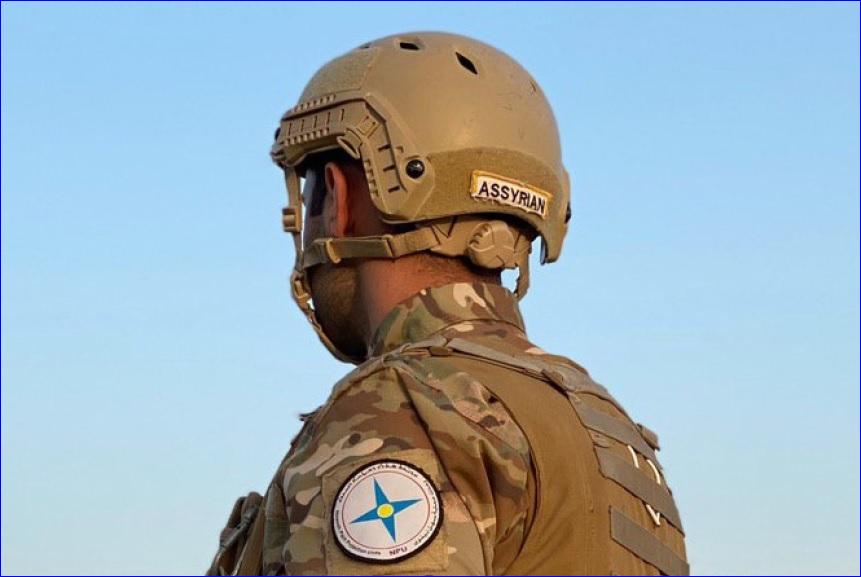


Following the 2003 invasion of Iraq, the U.S. military authorized KRG security forces to deploy in Ninewa, Kirkuk, and other governorates to temporarily fulfill the security vacuum following the collapse of the Iraqi Army in the wake of de-Ba'athification. This complicated dynamic--security controlled by the KRG in governorates still officially administered by the federal government-- did little more than produce tragic results for Assyrians in Ninewa, especially those in the Nineveh Plain. The KRG seeks to annex the resource-rich Nineveh Plain via a dubious claim that the area is "historically Kurdish," and has used its military presence to enforce territorial claims. The Arab-dominated Iraqi central government in Baghdad rejects the Kurdish ethno-nationalist claim over key territories within Ninewa and Erbil's secessionist agenda in general, but it has long neglected the region. As neither side can be confident they will maintain control of the Nineveh Plain, the area has suffered from underdevelopment and systemic negligence in public investment and service provision.
Read the report: The Future of Security in Iraq's Nineveh Plain
The most glaring consequence of the administrative and security arrangements of the Nineveh Plain, however, is the collapse of security in the summer of 2014; in both the Nineveh Plain and Sinjar, minorities were systematically rendered vulnerable to genocidal attacks.
The Nineveh Plain was liberated in early 2017, but post-conflict stabilization efforts have only reinforced the status quo. The KRG clings to control in the Nineveh Plain's northernmost towns. Various Iranian-backed groups, some affiliated with the Popular Mobilization Forces (PMF) and others not, occupy territory in an attempt to remake the Nineveh Plain's demographic composition. Iran's end-game is a veritable "Shia belt" stretching from Tehran to Beirut that runs through northern Iraq and the Nineveh Plain via local Shabaks on Tehran's payroll. The U.S., which still has thousands of troops stationed in Iraq as part of the anti-ISIS coalition, is struggling to thwart Iran's expanding influence. As part of these efforts, in January 2020, the U.S. killed Qasem Soleimani and Abu Mahdi al-Muhandis. Soleimani was a major general in the Iranian Revolutionary Guard Corps (IRGC) and head of its al-Quds force, which specializes in paramilitary operations and military intelligence. The U.S. held him directly responsible for the deaths of U.S. servicemen. Muhandis was the Deputy Chief of the Popular Mobilization Committee, which has been reported to have close links to the al-Quds Force. He was on the U.S. government's list of designated terrorists. Meanwhile, tens of thousands of Iraqi civilians took to the streets to rally against political corruption, economic stagnation, and rampant foreign intervention.
Related: Timeline of ISIS in Iraq
Related: Attacks on Assyrians in Syria By ISIS and Other Muslim Groups
Caught in the middle are a number of Assyrian groups seeking a measure of political autonomy, chief among them the Assyrian Democratic Movement (ADM). In November 2014, the ADM supported the creation of an Assyrian-led security force: The Nineveh Plain Protection Units (NPU). The ADM/NPU's primary goal is the creation of a Nineveh Plain province for minorities falling within direct federal government authority and equal to the fourteen provinces outside the Kurdistan Region of Iraq (KRI). Assyrian officials argue that the establishment of such an entity would give minoritized peoples political rights equal to those of Iraq's larger ethno-sectarian groups. Critically, it could help elevate the heterogeneous Nineveh Plain above the Arab-Kurdish feud over the "disputed territories of northern Iraq."
In January 2014, the Iraqi central government endorsed the creation of three new governorates, including a Nineveh Plain Governorate.9 Yet the rise and spread of the Islamic State, the KRG's territorial ambitions, political marginalization of minorities, foreign intervention, ongoing domestic turmoil, and the difficult process of reconstituting the Iraqi state has meant that the plan has yet to get off the ground.
Related: Assyrians: Frequently Asked Questions
The liberation of territory held by the Islamic State provided some reprieve for Assyrians, but security threats and a deep sense of mistrust continue to inhibit the return of internally-displaced persons (IDP). The prospects for Iraqi politics. The Iraqi Government and the KRG do not enjoy a favorable stance among the Assyrians; the Iraqi Government is seen to be largely neglectful of the Assyrians while the KRG is seen to be largely focused on its own ethno-nationalist agenda at the expense of Assyrians and Yazidis.10 Post-liberation security arrangements have exacerbated their sense of fear and mistrust.
Related: Brief History of Assyrians
This report examines the failed security policies that enabled the Islamic State's 2014 invasion of Ninewa. It also examines the differing rates of return to the post-liberation Nineveh Plain as the primary and most objective indicator of a preferred security policy, and assesses the various factors behind differing rates of return. The goal is two-fold: first, it aims to convey a detailed understanding of the how these failed policies explain the current security challenges facing Assyrians, including their broader implications for Iraq. Second, it suggests policies for security provision in the Nineveh Plain into the future that are most likely to result in increasing further return of displaced Assyrians and ensure their long-term survivability in the region. This report is organized into six parts. Part I provides a broad overview of the geography, demography, and strategic importance of the Nineveh Plain. Part II addresses the security policies that enabled the Islamic State's invasion and occupation of the area. Part III examines security failures during the initial stages of the Islamic State's northern Iraq offensive. Part IV presents information about the various security forces currently contesting for control of the Nineveh Plain. Part V analyzes rates of return to the Nineveh Plain. Policy recommendations and concluding remarks are offered in Part VI.

or register to post a comment.